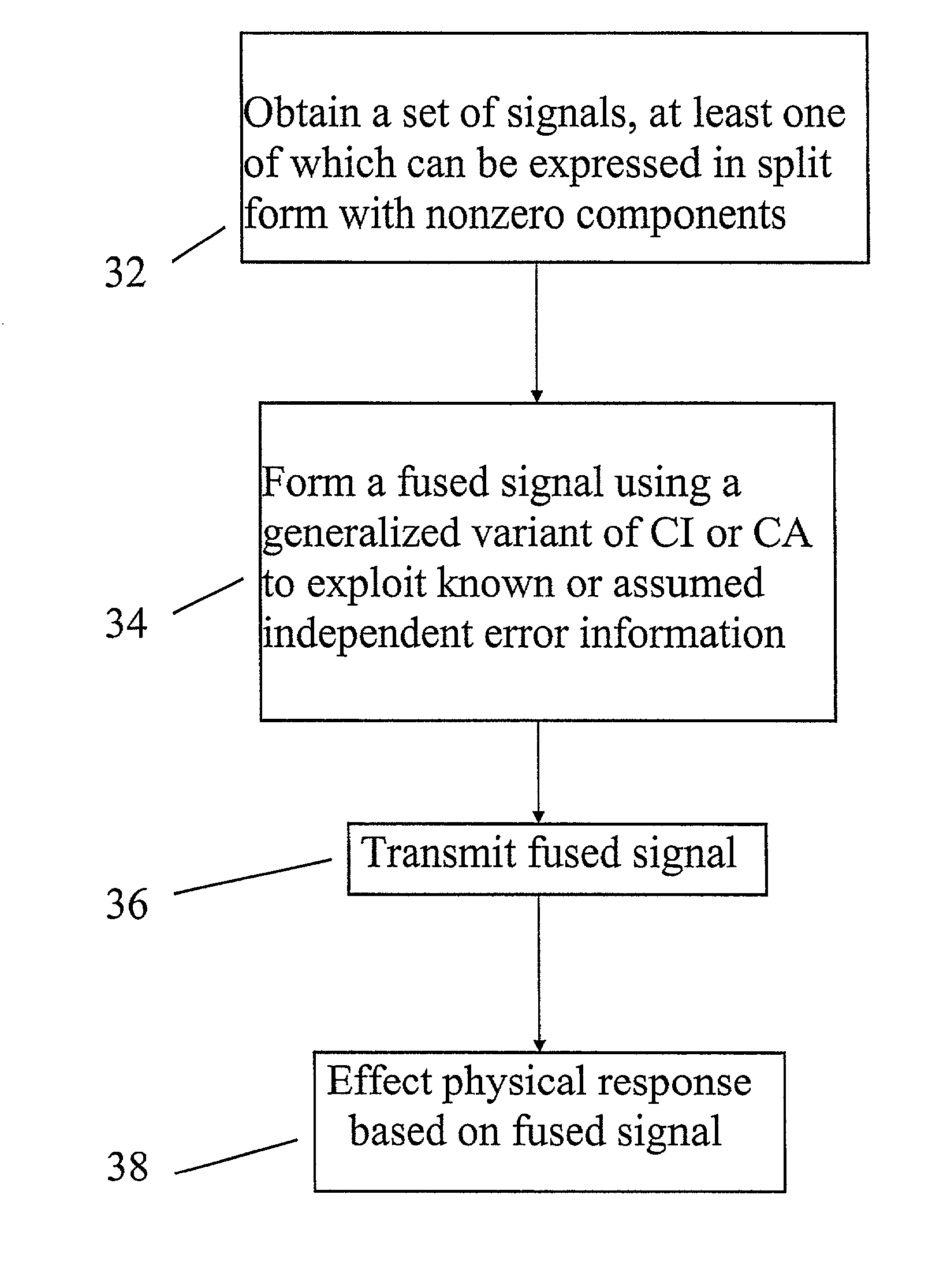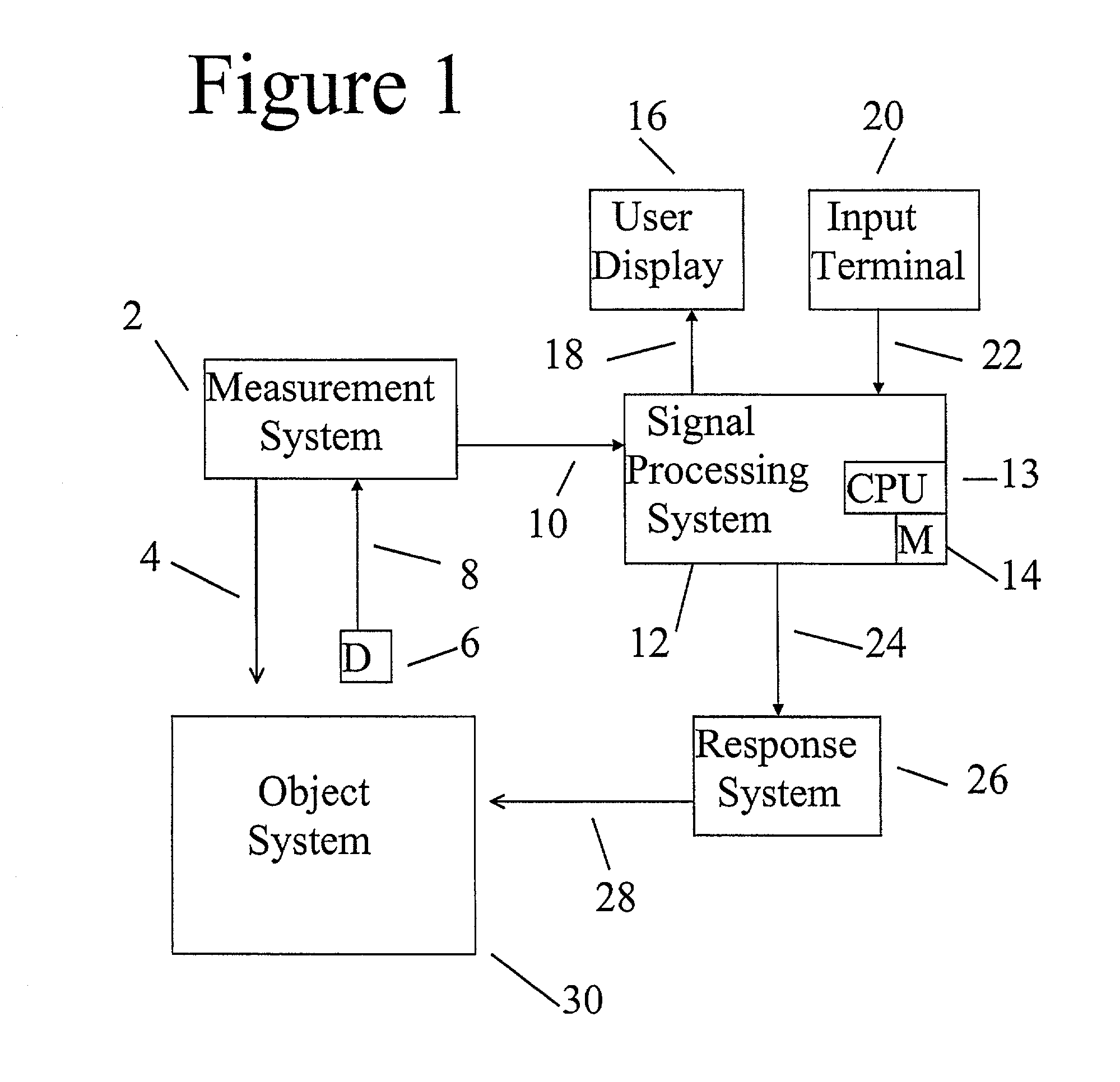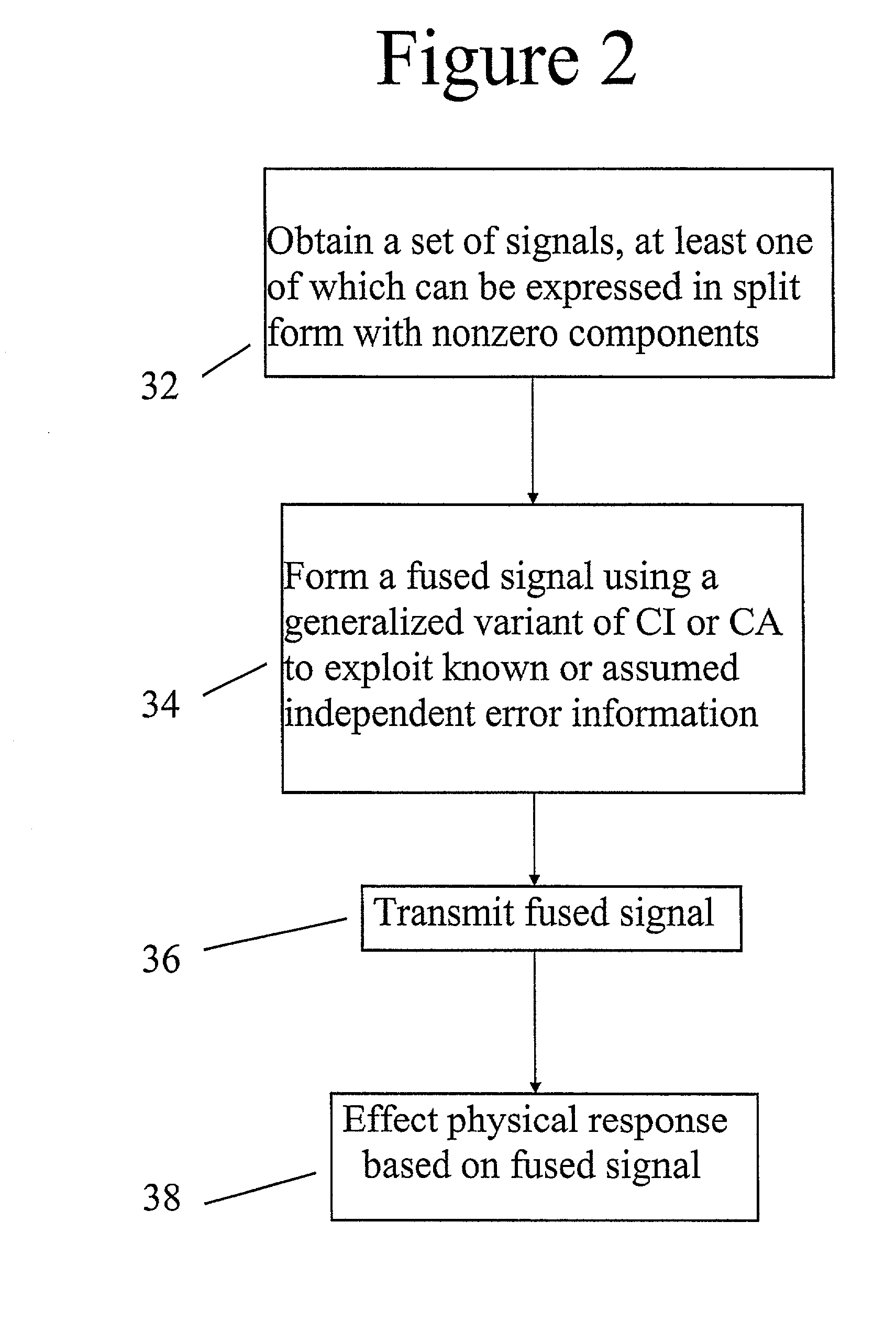Method and apparatus for fusing signals with partially known independent error components
a signal and component technology, applied in the field of signal processing methods and apparatuses, can solve the problems of inability to apply bounds in practice, inability to apply bounds widely, and inherently random error associated signals representing a measurement of any physical system
- Summary
- Abstract
- Description
- Claims
- Application Information
AI Technical Summary
Benefits of technology
Problems solved by technology
Method used
Image
Examples
Embodiment Construction
[0295] Embodiments of the present invention relating to autonomous vehicles and SLAM have already been discussed. Other embodiments relating to nonlinear filtering, track-to-track data fusion, multiple-model filtering, and general decentralized data fusion applications have also been discussed. Various other objects, features, and attendant advantages of the present invention will be more fully appreciated as the same becomes better understood from the following detailed description when considered in connection with the accompanying drawings in which like reference characters designate like or corresponding parts, wherein:
[0296] FIG. 1 shows a block diagram of an engineering system according to the invention which includes a measurement system 2 for measuring properties of an object system 30. The measurement system 2 includes a probe signal source 4 of probe signals for probing the state of the object system 30. It should be understood that the probe signal source 4 may include mu...
PUM
 Login to View More
Login to View More Abstract
Description
Claims
Application Information
 Login to View More
Login to View More - R&D
- Intellectual Property
- Life Sciences
- Materials
- Tech Scout
- Unparalleled Data Quality
- Higher Quality Content
- 60% Fewer Hallucinations
Browse by: Latest US Patents, China's latest patents, Technical Efficacy Thesaurus, Application Domain, Technology Topic, Popular Technical Reports.
© 2025 PatSnap. All rights reserved.Legal|Privacy policy|Modern Slavery Act Transparency Statement|Sitemap|About US| Contact US: help@patsnap.com



